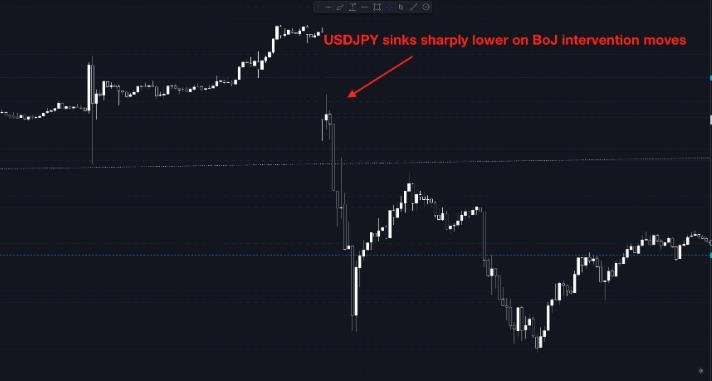The Japanese yen has been under pressure lately, as the US dollar has strengthened on the back of higher US Treasury yields and expectations of tighter monetary policy by the Federal Reserve. The USD/JPY pair has risen to an 11-month high of 149.32 on Monday, testing a key psychological level that could trigger intervention by the Bank of Japan (BOJ) or the Ministry of Finance (MoF) to stem the yen’s depreciation.
Why is the yen weakening?
The main reason for the yen’s weakness is the widening interest rate differential between Japan and the US. The BOJ has maintained its ultra-low interest rate policy and its massive bond-buying program, known as yield curve control (YCC), to support the economy and achieve its 2% inflation target. The BOJ has pledged to keep the 10-year Japanese government bond (JGB) yield at around 0%, while the US 10-year Treasury yield has climbed to 3.5%, the highest since 2021.

The BOJ’s dovish stance contrasts with the Fed’s hawkish signals, as the US central bank has indicated that it could raise interest rates as soon as November and start tapering its asset purchases by December. The Fed’s actions reflect its confidence in the US economic recovery and its concern about rising inflation pressures. The divergence in monetary policy between the two countries has made the dollar more attractive than the yen, as investors seek higher returns.
What are the risks of intervention?
The BOJ and the MoF are worried that a weaker yen could hurt Japan’s export competitiveness and undermine its economic recovery from the pandemic. A weaker yen also makes imports more expensive, which could worsen Japan’s trade balance and increase inflationary pressures. Moreover, a weaker yen could trigger capital outflows from Japan, as domestic investors seek higher returns abroad.
The BOJ and the MoF have repeatedly warned that they are closely watching the foreign exchange market and that they will take appropriate action if needed. The last time they intervened in the market was in 2011, when they sold about 4.5 trillion yen ($40 billion) to curb the yen’s appreciation after a devastating earthquake and tsunami hit Japan. The intervention was coordinated with other major central banks, such as the Fed, the European Central Bank (ECB), and the Bank of England (BoE).
However, intervention is not a guarantee of success, as it depends on several factors, such as market conditions, timing, size, frequency, and coordination. Intervention can be effective in smoothing out excessive volatility or correcting misalignments in exchange rates, but it cannot change the underlying fundamentals that drive currency movements. Intervention can also backfire if it is seen as a sign of weakness or desperation by market participants, who may bet against it and increase their selling pressure on the yen.
How could ‘risk off’ sentiment help the yen?
One factor that could help the yen regain some strength is a shift in market sentiment from ‘risk on’ to ‘risk off’. This means that investors become more cautious and risk-averse, and seek safe-haven assets, such as gold, bonds, and currencies like the yen and the Swiss franc. A ‘risk off’ scenario could be triggered by various events, such as geopolitical tensions, natural disasters, political instability, or financial crises.
A ‘risk off’ sentiment could boost the demand for the yen, as it is seen as a reliable store of value and a source of liquidity in times of stress. A ‘risk off’ sentiment could also reduce the demand for the dollar, as investors unwind their carry trades, which involve borrowing in low-yielding currencies like the yen and investing in high-yielding currencies like the dollar. A ‘risk off’ sentiment could also lower US Treasury yields, as investors flock to safe-haven bonds, which would narrow the interest rate gap between Japan and the US.
If a ‘risk off’ sentiment prevails in the market, it could give a boost to the BOJ’s intervention efforts, as it would amplify their impact on weakening the dollar and strengthening the yen. However, this would depend on how long and how severe the ‘risk off’ sentiment lasts, and whether it outweighs other factors that influence exchange rates.
